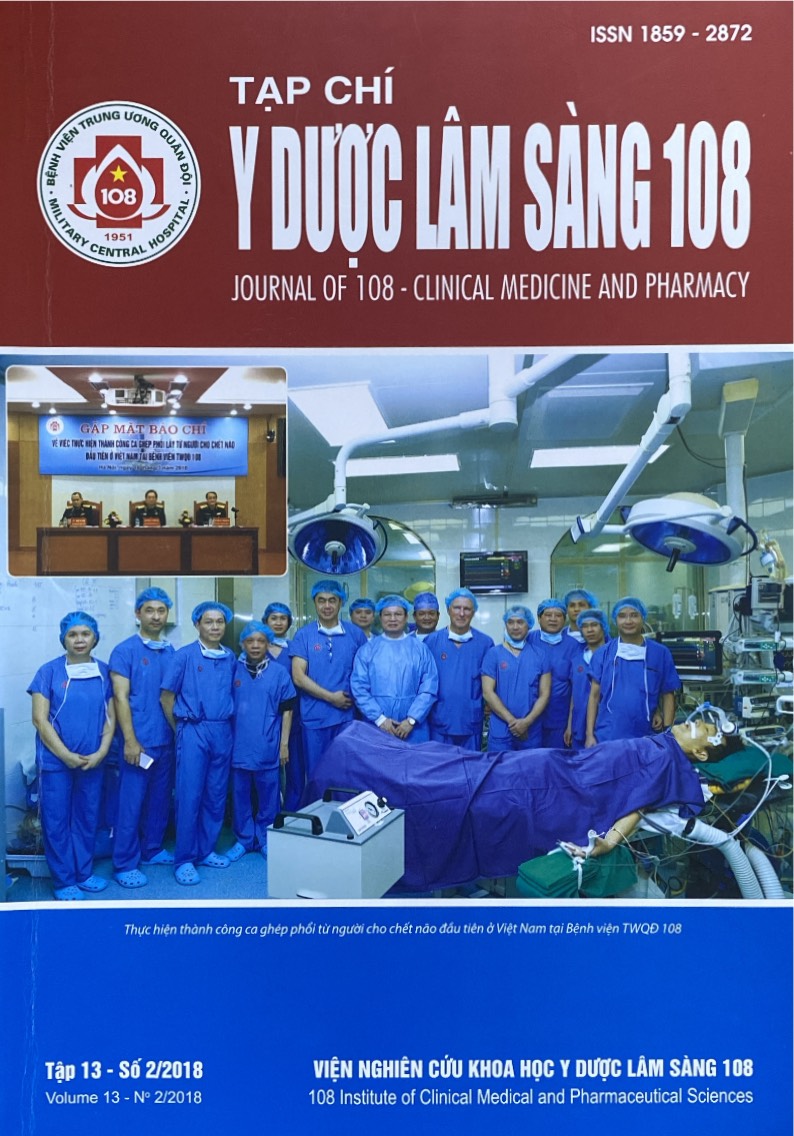Evaluation the surgical reconstruction results of skin radiation injuries
Main Article Content
Keywords
Abstract
Objective: To assess the surgical reconstruction results of skin radiation injuries in 30 patients who underwent radiotherapy. Subject and method: A cross-sectional study was conducted on 30 patients with skin ulcer caused by radiation after their treatment at National Institue of Burns Le Huu Trac from 10/2013 to 2/2017. Result: 30 patients, 5 were males and 25 were females. The mean age was 50.87 ± 17.67. 15 patients had a radiation injury of the chest wall, 9 patients suffered from head and neck’s lesion. The size of the soft tissue defects varied from 4 - 300cm2 (mean 85.3 ± 68.9cm2). We used 6 local flaps, 19 pedicle flaps and 5 free flaps. The latissimus dorsi musculocutaneous flap and Gluteal perforator artery fasciocutaneous flap used in the majority of these cases. The surgical times averaged 136 minutes, drainage times averaged 10.4 ± 6 days. Hospitalization averaged 51 days and 12 hours. 18 patients had primary closure of the donor site, 12 patients required skin graft. One patient had partial flap necrosis, two instances had complete flap loss. Conclusion: The most reliable method to treat a radiation ulcer is wide excision of the affected tissue, followed by coverage with well-vascularized tissue. However, the treatment of chronic skin ulcers after radiotherapy has always been a big challenge for surgeons because of high incidence complications, increased risk infection, delayed wound and necrosis
Article Details
References
2. Vũ Ngọc Lâm (2015) Đánh giá kết quả phẫu thuật điều trị tổn thương di chứng xạ trị mạn tính vùng hàm mặt. Tạp chí Y Dược lâm sàng 108, Tập 10, Số 6, tr. 84-90.
3. Mary W and MacBride, Sheila (2003) Radiation skin reactions. Supportive Care in Radiotherapy: 137-138.
4. Saito A, Saito N, Funayama E, & Minakawa H (2013) The surgical treatment of irradiated wounds: A report on 36 patients. Plast Surg: Int J, 7.
5. Fujioka M (2014) Surgical reconstruction of radiation injuries. Advances in wound care 3(1): 25-37.
6. Bourget A, Chang JT, Wu DBS, Chang CJ & Wei FC (2011) Free flap reconstruction in the head and neck region following radiotherapy: A cohort study identifying negative outcome predictors. Plastic and reconstructive surgery 127(5): 1901-1908.
7. Baumann DP, Yu P, Hanasono MM & Skoracki RJ (2011) Free flap reconstruction of osteoradionecrosis of the mandible: A 10-year review and defect classification. Head & neck 33(6): 800-807.
8. Cheon YW, Lee MC, Kim YS, Rah DK & Lee WJ (2010) Gluteal artery perforator flap: A viable alternative for sacral radiation ulcer and osteoradionecrosis. Journal of Plastic, Reconstructive & Aesthetic Surgery 63(4): 642-647.
9. Cruz NI et al (1984) An experimental model to determine the level of antibiotics in irradiated tissues. Plast Reconstr Surg 73: 81.
 ISSN: 1859 - 2872
ISSN: 1859 - 2872
